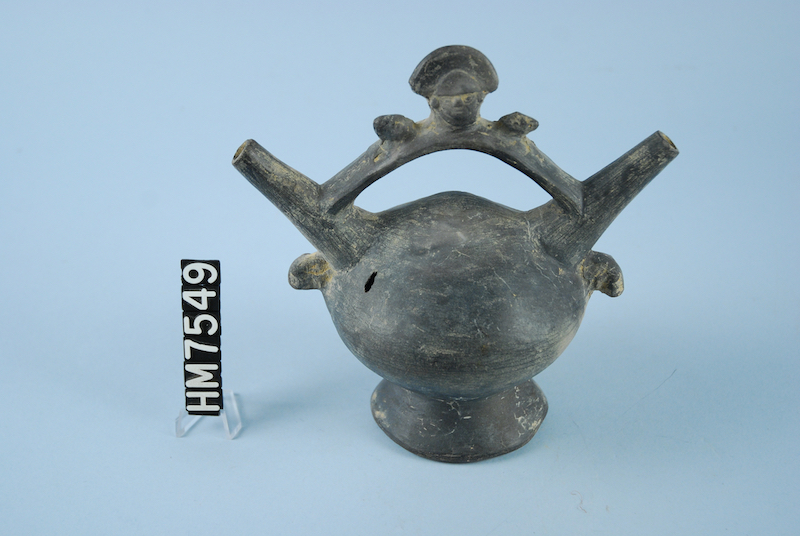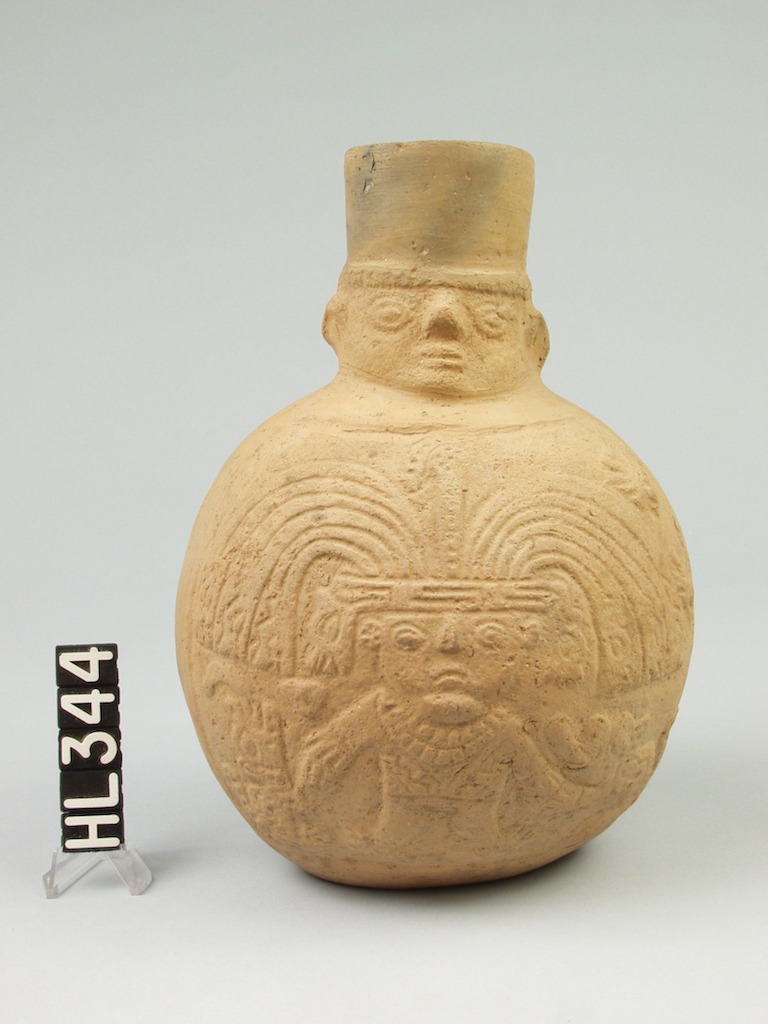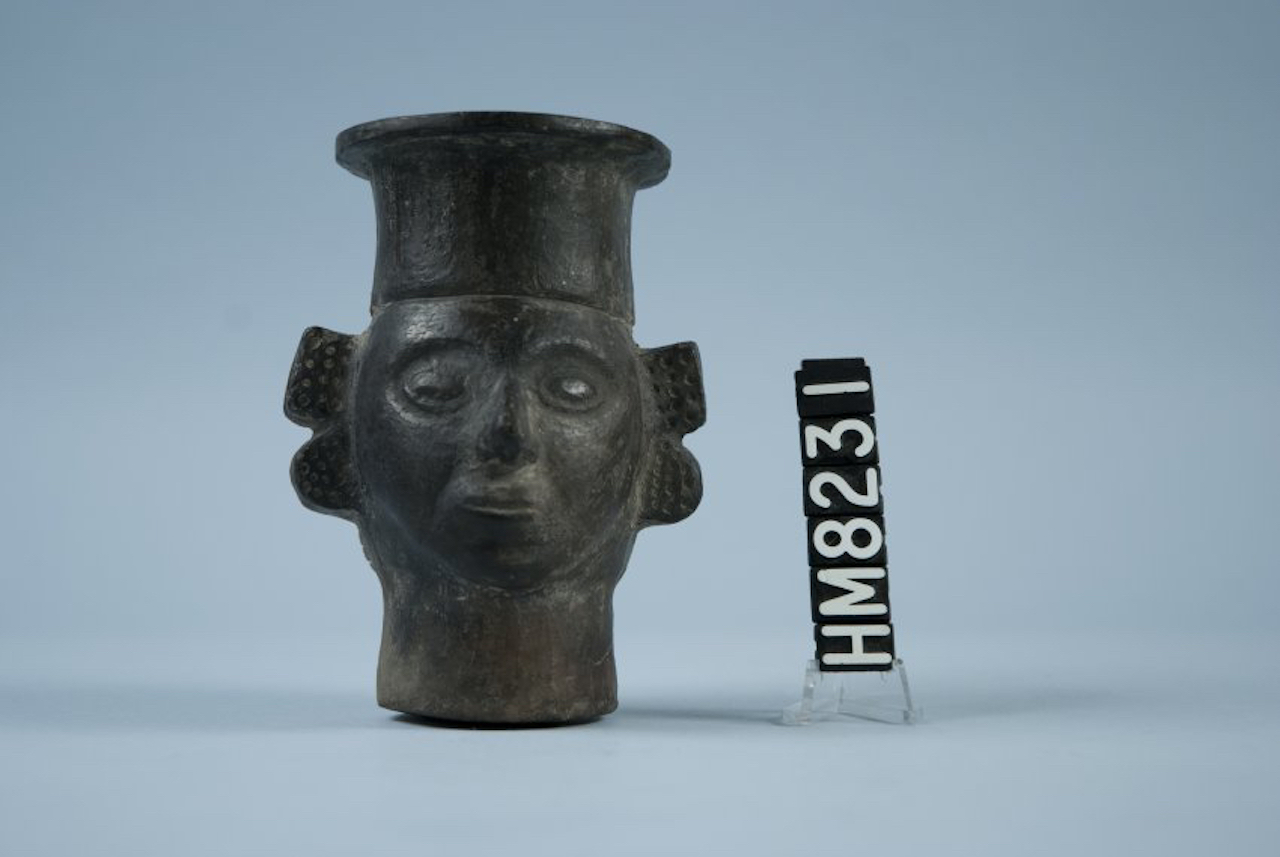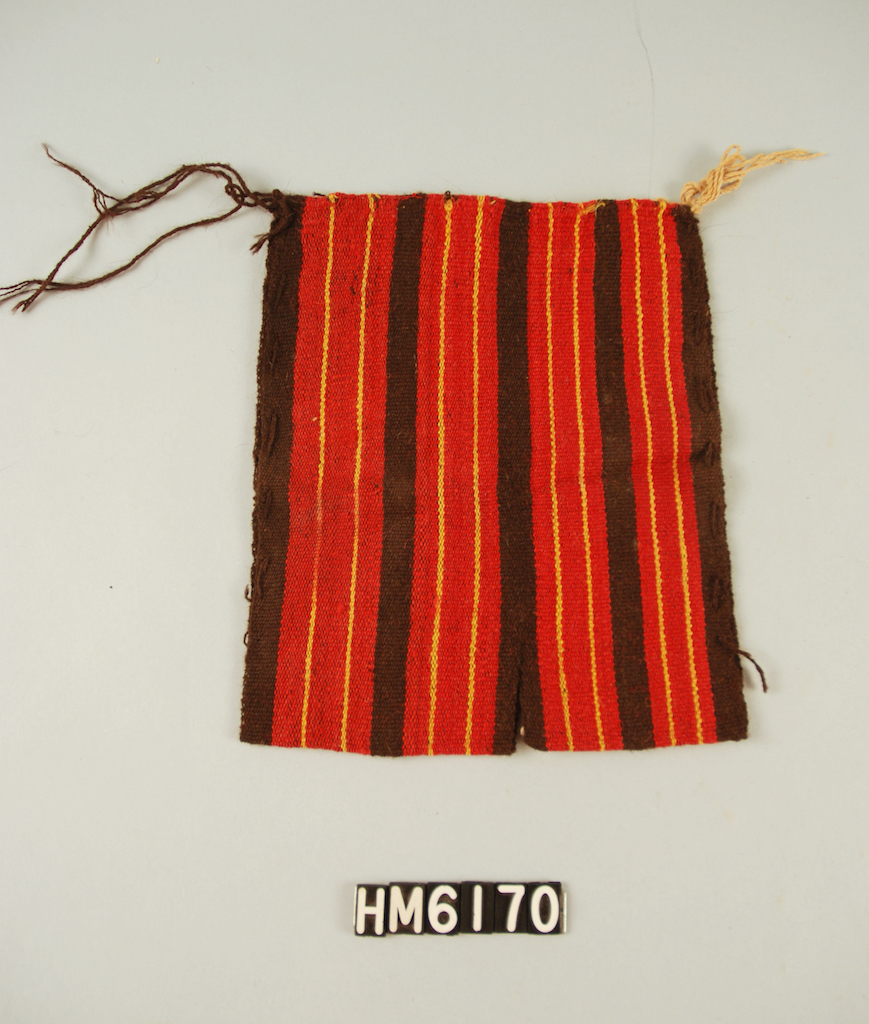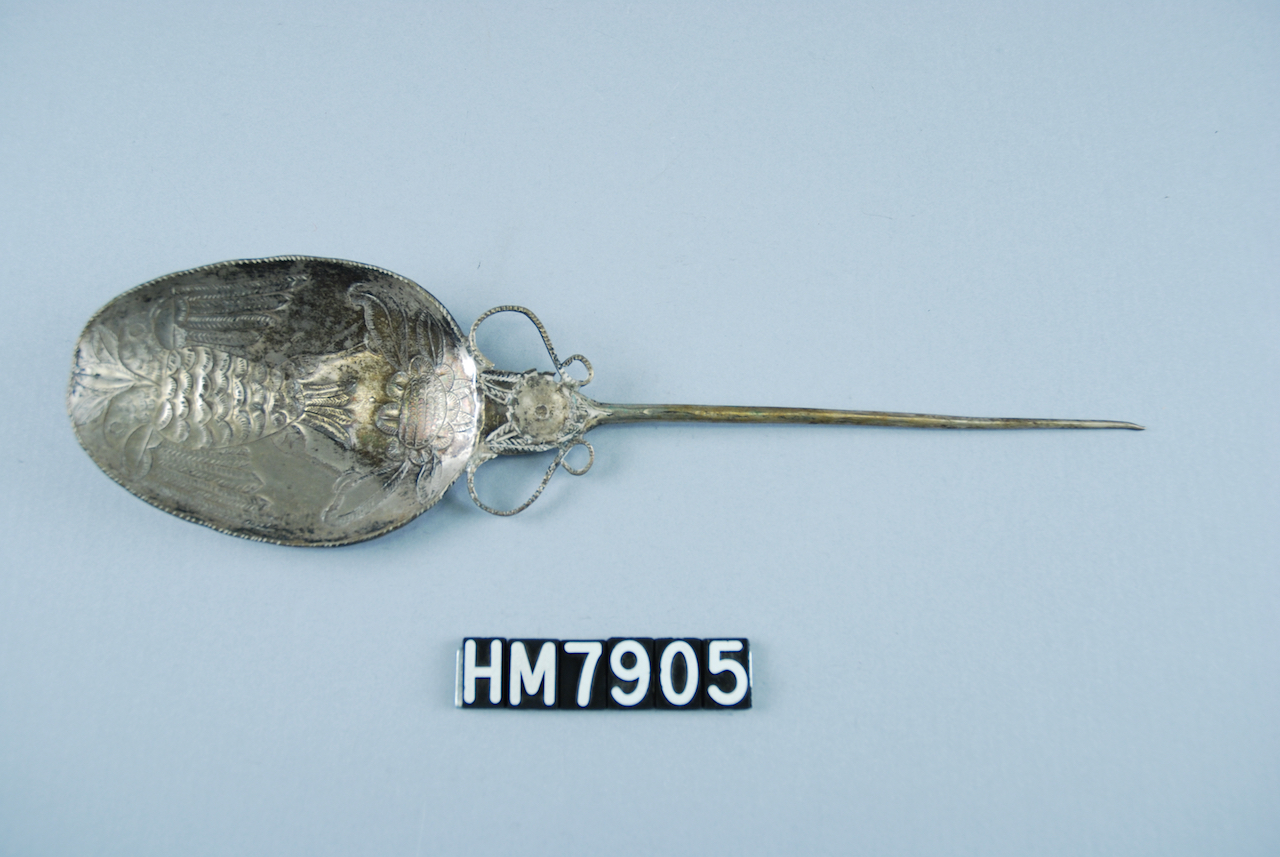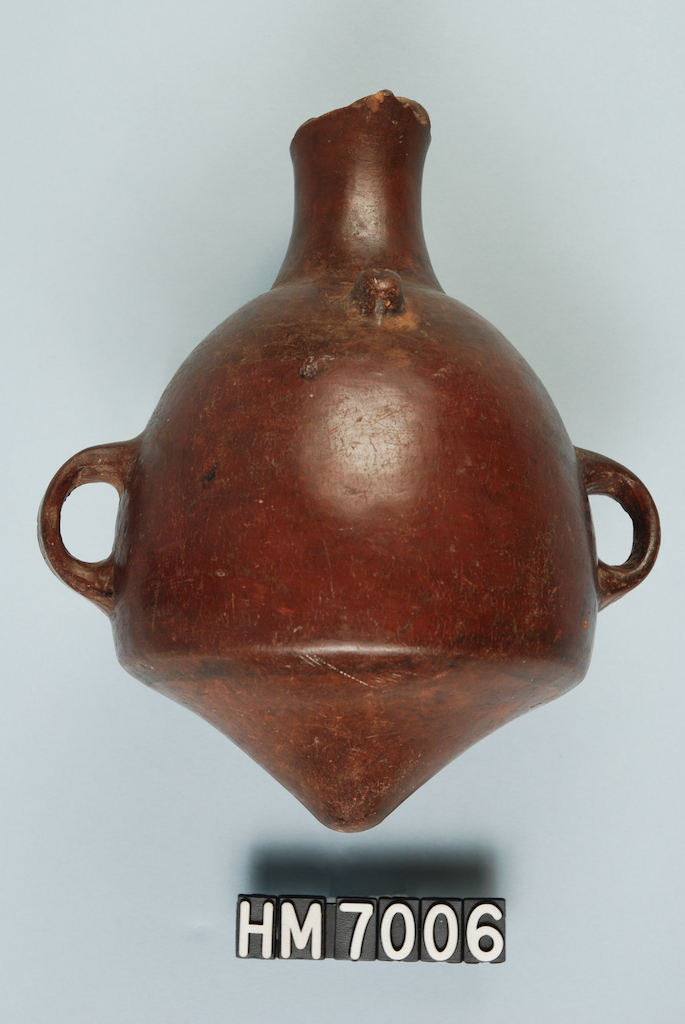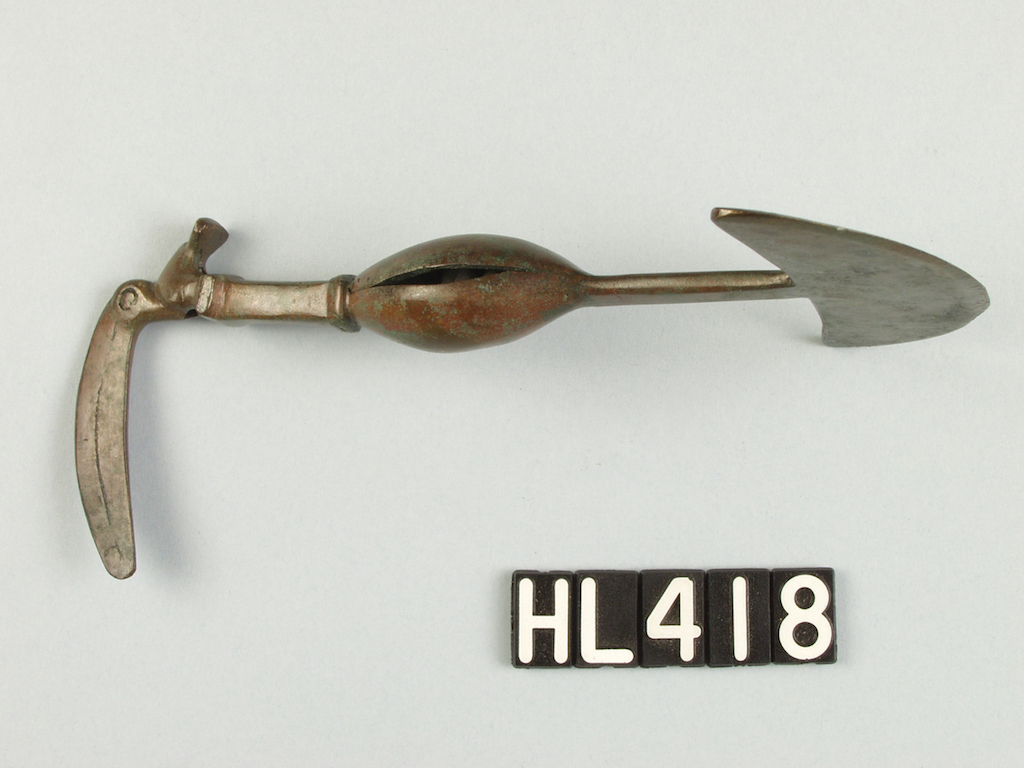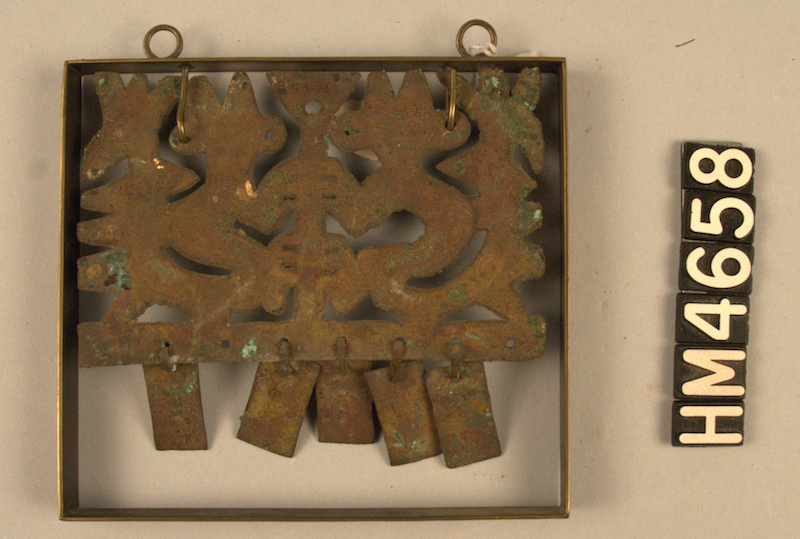Inca and Pre-Inca Cultures
This assemblage of artifacts represents three civilizations that succeeded one another, each fading or collapsing with another taking its place. Lambayeque or Sican culture developed in the North Coast of Peru around 750 AD with its capital at Batán Grande. After centuries of prosperity, Batán Grande was largely abandoned, perhaps in part due to climatic events, and a new capital was established at Túcume around 1100 AD.
Around 1350 AD, the coastal Chimú conquered the Lambayeque region, including Túcume, and extended their influence along the entire desert area running along the North Coast of Peru is an excellent environment for preservation. Among the holdings are examples of exquisitely woven textiles of the Chimú and ceramics.
In 1470 the highland Inca in turn conquered the Chimú, creating the largest empire in the pre-conquest Americas. Inca holdings exhibited here include ceramics, used for the production, storage, and transport of chicha (corn beer), and kerosene or serving vessels for these beverages. Many of these objects are transitional, harking to the material culture forms of the Chimú. Beginning in 1532 AD, contact with the Spanish brought diseases that decimated indigenous populations, and warfare enslaved populations, and physically destroyed communities which marked the destruction of the Inca empire.
Lambayeque or Sican Vessel
AD 900-1470
Norton Collection
Chimu Ceramic Bottle
AD 900-1470
Legge Collection
Chimu Figural Vessel
AD 1100-1400
Legge Collection
This piece was formed in a mold.
Inca Infant Poncho
AD 1300-1500
This textile woven from camelid fibers-llamas, alpacas, vicunas, and guanacos-is from the South Coast of Peru.
Spoon Tupu or Shawl Pin
Legge Collection
A tupu is a traditional pin used to hold up a dress or pin mantles or cloaks about the shoulders. After contact, lupus were often made by modifying silver spoons and allowed Andean women to display wealth and hence status.
Inca or Pre-Inca Textile Shuttle
Wood preservation in archeological sites is not common, but objects like this shuttle were often preserved in coastal desert regions of Peru.
Inca Pacca or Drinking Vessel
AD 1430-1532
William P. Palmer III Collection
Inca Cuzco Bottle or Aribalo
15th Century
Jennings collection
This vessel form was used to store chicha or corn beer. Aribalos ranged widely in size and this smaller version was likely intended for personal use.
Lambayeque or Sican Squash Figural Vessel
AD 900-1470
Baumann-Nelson Collection
Lambayeque or Sican Copper Tumi
AD 900-1470
Legge Collection
Tumis, like this example, were used as ceremonial knives. This version is also a rattle.
Chimu Copper Pectoral
AD 900-1470
Rothchild Collection
Chimu Staff
AD 1250-1425
Marks Collection
Natural tree branches are wrapped with bands of alpaca or llama wool and the ends are topped with tropical bird feathers.

